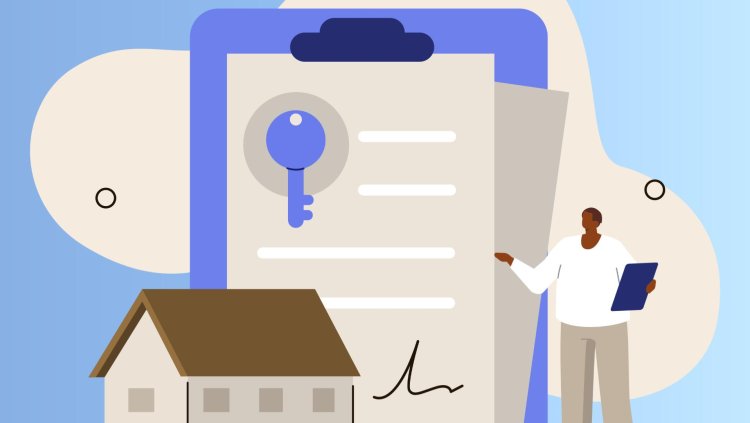How to Conduct a Business Insurance Inventory for Your Small Business
Running a small business involves numerous responsibilities, one of the most critical being ensuring that your business is adequately protected from various risks.

Running a small business involves numerous responsibilities, one of the most critical being ensuring that your business is adequately protected from various risks. Conducting a business insurance inventory is an essential process that helps you review and assess your current insurance coverage to ensure it aligns with your business needs. This comprehensive guide will walk you through the steps of conducting a business insurance inventory and address frequently asked questions to help you safeguard your business effectively.
A business insurance inventory is a systematic process of evaluating your current insurance policies and coverage to ensure they meet your business needs. This inventory helps you identify any gaps in coverage, adjust policy limits, and add new types of insurance if necessary. The primary objective is to ensure that your business is protected against potential risks, including property damage, liability claims, and other unforeseen events.
Importance of a Business Insuranc e Inventory:
- Risk Management: Helps in identifying and mitigating risks that could potentially harm your business.
- Financial Protection: Ensures you have adequate coverage to prevent financial losses due to unforeseen events.
- Compliance: Keeps your business in compliance with legal and regulatory insurance requirements.
- Peace of Mind: Provides reassurance that your business is protected against various risks.
Assess Your Business Needs
Before diving into your insurance policies, it's crucial to understand your business's unique needs and risks. This assessment will guide you in determining the types of coverage required.
Steps to Assess Business Needs:
- Identify Industry-Specific Risks: Consider the inherent risks associated with your industry. For example, a construction business might face risks related to site accidents, while a tech startup might be concerned about data breaches.
- Evaluate Business Size and Scope: Assess factors such as the size of your business, the number of employees, and the geographical areas you operate in. Larger businesses or those with multiple locations may require more extensive coverage.
Questions to Consider:
- What are the primary risks associated with my industry?
- How does the size and scope of my business impact my insurance needs?
- Are there any unique risks related to my specific business operations?
Review Existing Insurance Policies
Gather all current insurance policies and review them in detail. This includes understanding the coverage limits, exclusions, and terms of each policy.
Steps to Review Existing Policies:
- Collect Policy Documents: Gather all documents related to your business insurance policies, including certificates of insurance, policy declarations, and endorsements.
- Understand Coverage Details: Review each policy to understand what is covered, the coverage limits, and any exclusions or conditions.
- Assess Policy Adequacy: Compare your current coverage with your business needs and risks to determine if your policies provide adequate protection.
Key Areas to Review:
- Property Insurance: Covers physical assets such as buildings, equipment, and inventory.
- Liability Insurance: Includes general liability, professional liability, and product liability.
- Workers' Compensation: Provides coverage for employee injuries and illnesses related to work.
Identify Coverage Gaps
Once you have reviewed your existing policies, it's essential to identify any coverage gaps. These gaps represent areas where your current insurance may not provide sufficient protection.
Steps to Identify Coverage Gaps:
- Compare Coverage with Risks: Match your identified risks with your existing coverage to see if there are any discrepancies.
- Evaluate Coverage Limits: Check if the limits of your policies are sufficient to cover potential losses. For example, ensure that property insurance limits are high enough to cover the full value of your assets.
- Consider Additional Coverage: Determine if you need additional types of insurance or higher limits based on your business activities.
Common Coverage Gaps:
- Cyber Liability Insurance: If you handle sensitive customer data, you may need additional coverage for cyber-attacks and data breaches.
- Business Interruption Insurance: Covers lost income and expenses if your business is temporarily unable to operate due to a covered event.
List All Business Assets
Documenting all business assets is a crucial step in ensuring that you have adequate insurance coverage. This includes both physical and intangible assets.
Steps to List Business Assets:
- Physical Assets: Create a comprehensive list of equipment, inventory, furniture, and real estate owned by your business. Include details such as purchase dates, values, and serial numbers.
- Intangible Assets: If applicable, list intangible assets such as patents, trademarks, and proprietary technology.
Why It Matters:
- Accurate Valuation: Ensures that your property insurance covers the full value of your assets.
- Claims Process: Helps streamline the claims process by providing detailed records of what needs to be insured.
Evaluate Liability Risks
Assessing liability risks is essential for understanding the potential legal and financial consequences of business operations.
Steps to Evaluate Liability Risks:
- General Liability: Covers claims related to bodily injury, property damage, and advertising injuries. Assess the adequacy of your coverage for these risks.
- Professional Liability: If your business provides professional services or advice, consider professional liability insurance to protect against claims of negligence or errors.
- Product Liability: If you manufacture or sell products, evaluate the need for product liability insurance to cover claims related to product defects or safety issues.
Factors to Consider:
- Client Contracts: Review contracts with clients to understand any liability requirements.
- Industry Standards: Consider industry-specific liability risks and ensure your coverage aligns with industry practices.
Consult with Insurance Professionals
Engaging with insurance professionals can provide valuable insights and recommendations for optimizing your insurance coverage.
Steps to Consult with Professionals:
- Insurance Agents or Brokers: Reach out to professionals who specialize in business insurance. They can provide expert advice and help identify suitable policies for your needs.
- Review Recommendations: Discuss any recommendations or changes suggested by the professionals and assess their relevance to your business.
Benefits of Professional Consultation:
- Expert Advice: Gain insights into the most appropriate types of insurance and coverage levels for your business.
- Policy Shopping: Benefit from their ability to shop around for the best policies and rates.
Review Employee and Worker Coverage
Employee and worker coverage is a critical aspect of your insurance inventory. Ensure that you have adequate protection for your workforce.
Steps to Review Employee Coverage:
- Workers' Compensation: Verify that your workers' compensation insurance meets legal requirements and provides sufficient coverage for employee injuries and illnesses.
- Employee Benefits: Assess other benefits-related insurance such as health, disability, and life insurance, if applicable.
Considerations:
- Legal Requirements: Ensure compliance with state and federal regulations regarding worker coverage.
- Employee Risks: Evaluate specific risks associated with your employees' roles and activities.
Update and Document Changes
After completing your insurance inventory, update your policies as needed and document any changes made.
Steps to Update Policies:
- Implement Changes: Make necessary adjustments to your existing policies based on your findings. This may include increasing coverage limits, adding new types of insurance, or removing unnecessary policies.
- Document Changes: Keep detailed records of all changes made, including updated policy documents and correspondence with insurance providers.
Why Documentation is Important:
- Audit Trail: Provides a record of changes for future reference and audits.
- Policy Management: Helps track and manage your insurance coverage effectively.
Schedule Regular Reviews
A business insurance inventory is not a one-time task but an ongoing process. Schedule regular reviews to ensure your coverage remains adequate.
Steps for Regular Reviews:
- Set a Timeline: Determine how often you should review your insurance policies (e.g., annually or semi-annually).
- Monitor Business Changes: Stay updated on any changes in your business operations, size, or industry that may impact your insurance needs.
Benefits of Regular Reviews:
- Adapt to Changes: Adjust coverage as your business evolves and new risks emerge.
- Maintain Adequacy: Ensure continued protection and compliance with insurance requirements.
FAQs
1. Why is a business insurance inventory important?
A business insurance inventory is crucial for identifying coverage gaps, ensuring adequate protection, and managing risks effectively. It helps safeguard your business from financial losses and ensures compliance with legal and regulatory requirements.
2. How often should I conduct a business insurance inventory?
It is recommended to conduct a business insurance inventory at least annually. However, you should also review your insurance coverage whenever there are significant changes in your business, such as expansion, acquisitions, or changes in operations.
3. What types of insurance should a small business consider?
Small businesses should consider various types of insurance, including:
- Property Insurance: Covers physical assets like buildings and equipment.
- Liability Insurance: Includes general, professional, and product liability.
- Workers' Compensation: Provides coverage for employee injuries and illnesses.
- Cyber Liability Insurance: Protects against data breaches and cyber-attacks.
- Business Interruption Insurance: Covers lost income during business interruptions.
4. How can I identify coverage gaps in my insurance policies?
To identify coverage gaps, compare your existing insurance coverage with the specific risks associated with your business. Look for areas where your coverage may be insufficient or missing entirely, and consult with insurance professionals for additional advice.
5. What should I do if I find gaps in my coverage?
If you identify gaps in your coverage, consult with an insurance agent or broker to obtain recommendations for additional policies or coverage adjustments. Update your insurance policies accordingly and ensure that all changes are documented.
6. How do I document my business assets for insurance purposes?
Create a detailed inventory of your business assets, including physical items such as equipment and inventory, as well as intangible assets like intellectual property. Include information such as purchase dates, values, and serial numbers to ensure accurate coverage.
7. What role do insurance professionals play in conducting a business insurance inventory?
Insurance professionals provide expert advice on your insurance needs, help identify appropriate coverage, and assist in obtaining suitable policies. They can also offer insights into industry standards and best practices for managing risks.
8. What should I consider when reviewing employee and worker coverage?
Ensure that you have adequate workers' compensation coverage to meet legal requirements and provide protection for employee injuries. Also, consider other benefits-related insurance such as health, disability, and life insurance, if applicable to your business.
9. How can I keep track of changes made to my insurance policies?
Maintain a record of all changes made to your insurance policies, including updated documents, correspondence with insurance providers, and any policy amendments. This documentation helps manage your coverage effectively and provides a reference for future reviews.
10. What are the benefits of scheduling regular insurance reviews?
Regular insurance reviews help adapt coverage to changes in your business, ensure continued protection, and maintain compliance with insurance requirements. They also provide an opportunity to reassess risks and adjust coverage as needed.
What's Your Reaction?



















